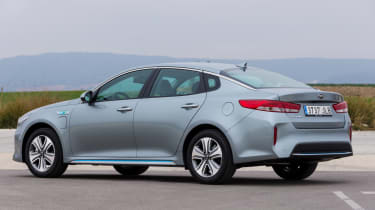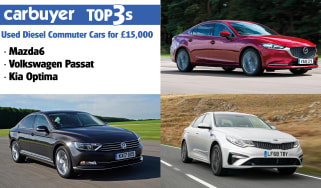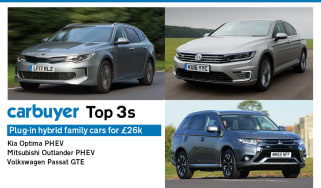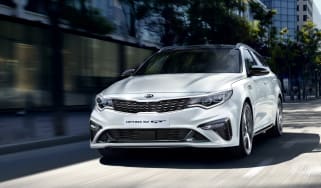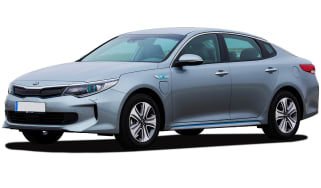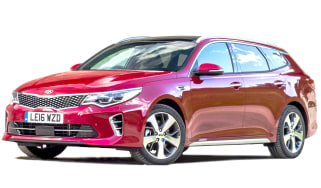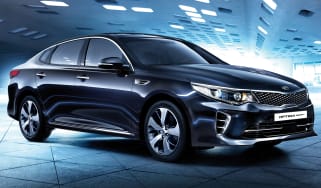Kia Optima saloon (2016-2019)
“The Kia Optima comes with plenty of equipment and the company’s excellent seven-year warranty”
Pros
- Excellent warranty
- Spacious cabin
- Great value
Cons
- Bland interior
- Boot could be bigger
- Hybrid model is expensive
The Kia Optima is a four-door saloon that goes up against excellent family cars like the Ford Mondeo, Skoda Superb, Mazda6 and Volkswagen Passat. The Optima is a handsome and generously equipped car and, while it was previously only available with a slightly underwhelming 1.7-litre diesel engine, the recent addition of a plug-in hybrid (PHEV) version brings the Optima out of the ‘also-ran’ category. Kia has also recently added an estate bodystyle to the Optima range: we’ve reviewed this Kia Optima SW separately.
The Optima’s 1.7-litre diesel engine returns 67.3mpg, so running costs are reasonable. Performance is less impressive, as although the 0-62mph time of 10 seconds is good on paper, the Optima needs to be worked hard when overtaking on the motorway and is fairly loud when accelerating. It’s also not that exciting to drive. With competition like the driver-focused Ford Mondeo, it was always going to struggle, but vague steering and noticeable body lean when cornering add up to an underwhelming experience behind the wheel.
Going for the hybrid model sees the Optima’s price increase by about £10,000 or so, but this includes all the equipment you’re ever likely to need or want. It’s also worth noting that the Optima hybrid attracts a Benefit-in-Kind rate of just 7%, making it seriously appealing to the company-car drivers it’s (realistically) aimed at; fuel economy is also a strong point, as the hybrid Optima returns a (claimed) 176.6mpg. Regardless of the Optima’s overall efficiency and appeal, it’s perilously close in price to the hybrid BMW 3 Series 330e, a car with a more desirable badge and a better driving experience.
Kia is shortly to offer a powerful GT version of the Optima, which comes with a 242bhp turbocharged petrol engine as well as suspension and handling tweaks. We drove the SW estate version of the Optima GT recently and found it enjoyable, although the purchase price and running costs may put some off.
Inside, the Optima has a well-designed dashboard and standard sat nav is a welcome feature, but the Kia doesn’t feel as ‘grown-up’ as the latest Skoda Superb, for example. It’s a very well-equipped car, though: in addition to sat nav, the entry-level Optima 2 has a seven-inch touchscreen, Bluetooth connectivity, a reversing camera and DAB radio, as well as a leather steering wheel and gearlever, alloy wheels, air-conditioning and all-round electric windows.
The hybrid Optima comes with almost every conceivable extra going, while upgrading the diesel model to 3 or GT-Line S trim costs about £2,000 or £8,000 respectively. We can’t help but feel these increases are hard to justify, though, considering the standard car’s list of equipment.
The Optima doesn’t sell in big enough numbers to have featured in our 2016 Driver Power customer satisfaction survey, and while Kia’s 14th place finish (out of 32 manufacturers) is pretty average its seven-year warranty is the most generous on the market, so Optima ownership should be a hassle-free affair. A five-star safety rating from Euro NCAP adds further reassurance.

